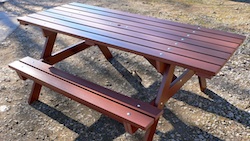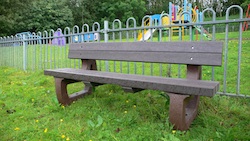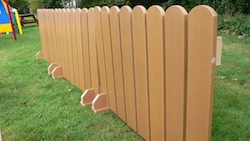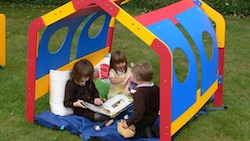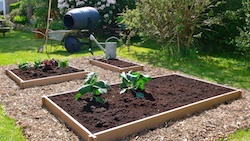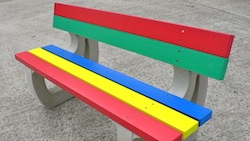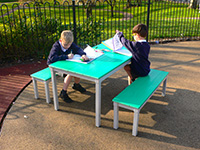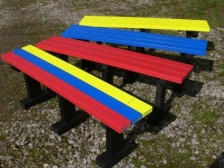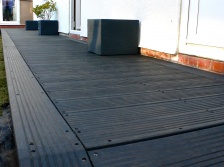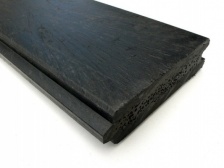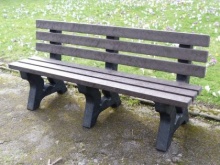How to Work with Plastic WoodNormal woodworking tools can be used with Kedel’s Plastic Wood, but here are a few useful tips that will help you get the best results: STORAGEExcessive expansion and contraction will affect working measurements, so Plastic Wood is best stored at room temperature, avoiding direct sunlight and long exposure to excessive temperatures above 100˚F/38˚C. Adequate evenly distributed support is recommended to prevent distortion before use. Protect the surface of the product from the elements, as well as dust and dirt, to avoid unsightly marking of the surface. Always cover fully when storing, especially outside, just as you would protect planed timber. MACHININGSharp tools are especially important when working with Plastic Wood. Blunt tools or badly maintained blades cause friction heat and wobble. This can cause the shavings, sawdust or swarf to become soft or even melt spoiling the finish and sticking to your tools. CUTTINGTable saws, radial arm saws, mitre saws, band saws and hand saws can all be used with Kedel’s Plastic Wood. Reciprocating saws that produce an oscillating, as well as back and forward movement, should be used with care. Set the oscillation high and revs low. The faster the cut the better, to minimise friction heat, so use a fast feed rate and a carbide tipped blade designed for fast cutting at speeds between 2-4000 rpm. This also ensures a clean cut. WD40 or other silicon spray on the blade helps reduce friction. Our own staff favour a negative pitch 62 tooth aluminium blade for best results, such as a Japanese Kanefusa Blade as supplied by Unilap. Always cut from the side that will be seen to avoid the possibility of unsightly chipping.DRILLINGKedel Plastic Wood can be drilled using all types of drill bit - e.g., brad point, split point, step drills. Coated drills (titanium nitride) that are designed to reduce friction are also recommended. For larger diameters, Forstner bits work best. It’s important to remove accumulated shavings as you go to avoid a build-up of friction heat which will cause the plastic to melt. Drill speeds should be 400 to 900 RPM to minimize friction heat. PLANINGPlastic Wood can be planed and jointed. Planing exposes the foam’s cell structure which should then be sealed. A high-quality sanding sealer works well after planing to seal the exposed foam structure. Removal of the exterior ‘skin’ of the plastic wood should be done evenly on both sides to avoid any bows or twists which can occur when the product expands and contracts due to the friction heat from planing. ROUTINGA router can be used for dados, rabbets, round-overs, etc. Carbide tipped tools with spiral up-cut bits are best. Straight flutted bits create more friction heat and cause melting. Use high speed bits and feed rates. When cutting deeper than 20mm, an air knife is recommended to remove the waste material continuously and avoid build up and friction melt. Routing on a CNC, as used for furniture manufacture, produces excellent results. JOINING & FASTENINGPlastic Wood joints can be glued or screwed. Both can be used when a stronger joint is needed. Most standard woodworking joints work well - e.g., mortise and tenon, lap joint etc. SCREWINGA variety of screw types are suitable for Plastic Wood. The greatest strength is achieved with parallel thread, coarse pitch screws. Pre-drill, especially when using thin profiles and within 20mm of board edges. Power Drivers with torque control help avoid stripping the threads when driving along the axis of the extrusion. Corrosion resistant screws and fastenings are obviously best for outside use. Stainless steel screws are softer, so predrilling is advisable. Ceramic-coated screws are stronger and still provide excellent corrosion resistance. Pocket screws are ideal method for making butt joints. Using a jig, such as supplied by Kreg Tools (www.kregtool.com), to create the pocket holes and subsequent gluing and screwing creates a strong butt joint. NAILING/STAPLINGNailing is not recommended for fastening thick Plastic Wood profiles; screwing or stapling is better. However, if you do decide to try it anyway, pre-drill to avoid splitting the profile. Nails should never be used closer than 20mm from the edge no matter what profile you are using. Pneumatic nailers can be used for finish nails and brads, but stapling is preferred using medium and wide crown staples. Do not use corrugated staples. Pneumatic tools should have an air regulator and operate at no greater than 75 PSI. GLUINGAdhesives can be used with Plastic Wood including both solvent-based and solvent-free products. However, water-based adhesives (standard wood-working glues) will NOT work. When using solvent-based adhesives you will spoil the surface of your plastic wood and will need to sand it if you get surplus glue on it, so apply it carefully. RECOMMENDED GLUES: Testors (#3501GA, #3503GA, #3521GA), GOOP, and IPS Weld On (#16) work well. Other solvent-based adhesives can be used but will not bond reliably. Solvent-free adhesives work well, such as Gorilla Glue, 3M’s Scotch Weld (#TE- 031), 3M’s Jet-Melt (#3764), and Titebond (#5492). Some solvent-free adhesives also work well such as those made by 3M, namely Super 77 and Super 90, available in a spray can. All these glues set in 1 to 7 minutes and will need constant pressure applied while setting. Make sure you have dust and dirt-free surfaces, so you get a good bond. Clamps or assembly jigs should be used for best results. After the adhesive sets, a cure time of 1 to 2 hours is required, to ensure sufficient bond strength before continuing. Usage and safety instructions supplied by the adhesive manufacturer should always be followed. BENDINGKedel profiles can be bent into a curve with a jig or form, but obviously not from cold. To bend, heat to 195 to 215ºF (100ºC) in a convection oven, hot box, or hot liquid bath. Only heat long enough to make the profile pliable (7-15 minutes depending on the profile thickness). Overheating will cause the foam to expand and distort the board. If not hot enough it may wrinkle. Run a trial first to gauge the time and temperature needed for any particular profile. After removing from the heat source, shape in the jig and allow to cool. The ends of the profile will ‘mushroom’ out, so be sure to allow sufficient length for trimming – 50mm should be enough. FINISHING AND DAMAGE REPAIRSCUFFS AND SCRATCHESMinor scuffs can easily be removed by gently buffing with ‘0000’ steel wool. The steel wool blends the scuff or scratch with the surrounding material but leaves the area with a slightly different finish. This can be polished with Pledge furniture polish or Carnauba wax to bring up the luster and blend with the virgin material. Scratches or tool marks (after machining) can be removed with either machine or hand sanding, wet or dry. Disc or orbital sanders should not be used, as they generate too much heat and will soften the material. Belt sanders, pad (palm) sanders, drum sanders and hand sanding all work well. DEEP SCRATCHESNicks and scratches can be removed using a sharp knife blade (X-Acto blade, single edge razor blade, utility knife blade). For deeper scratches, use a single-edged razor blade to skive the high spots from the surface of the product. Holding the razor blade perpendicular with the tip of the blade directly against the product, scrape the length of the scratch to shave off the raised edges. Do this gradually, typically 2 to 3 passes along the length of the scratch. Then use ultra-fine steel wool and furniture polish to blend into the existing surface finish as with fine scratches. GOUGESIn a small container, take some sawdust from the same colour profile with a small amount of lacquer thinner and mix to a thick paste. Fill the gouge with the paste, carefully smoothing the surface. When dry, use a razor blade to remove any high spots, buff with ultra-fine (#0000) steel wool and blend in with furniture polish such as Pledge. Be sure to use protective equipment (e.g., gloves, goggles, ventilation) when using the lacquer thinner. Large holes can be filled by doweling the hole or filled with plastic wood products, such as Minwax High-Performance Wood Filler or ZAR Latex Wood Patch. Dowelling can be sanded to blend with the surrounding product and the filler can be stained to blend in with the existing colour. STAINING & PAINTINGStaining, painting or preservative treatment is not required for Kedel’s plastic wood. However, stains can be used to alter the colour if required. Water based acrylic stains, such as Cabot Stains, work very well. Alkyd-based stains or varnishes also work well, but Gel-type stains are particularly recommended because they give a more uniform stain. Avoid any stain containing aromatic solvents (e.g., toluene, xylene). If you want to paint our plastic wood, use a high-quality oil-based primer followed by either oil based or latex exterior paints. SEALINGSurface sealers, such as urethanes, sanding sealers, or waxes, can be used. But don’t use sealers with aromatic solvents and always do a spot test first before applying to the entire surface. IPS Weld-On P-70 pipe joint primer and carnauba wax both give good results. MAINTENANCE ADVICECLEANINGHot soapy water is the best choice for cleaning. Kedel’s Plastic Wood has a non-porous surface and does not stain easily and most spills do not stick. Water-based household cleaners can be used for surface cleaning. It isn’t really necessary to use a power washer, but it’s safe if you prefer it. CLEANING PRODUCTS TO AVOIDAromatic solvents such as benzene, toluene and xylene, and their derivatives will cause permanent damage. Prolonged exposure to aliphatic solvents such as mineral oil, mineral spirits, n-petane, kerosene, VM & P, and gasoline will cause discolouration and may impact the plastic wood’s mechanical strength. NOTE: Before using any cleaning agent, stain, paint or other surface treatment, test a small area to ensure that the product is compatible. INSTALLATIONInstallation of Plastic Wood is quite similar to wood products of similar dimensions (width, thickness). Typically, 400mm centre spans are acceptable for decking products of 20mm thickness or greater. Trim (less than 20mm thick) in sheltered areas with limited direct sunlight can also have 400mm centres. Trim in highly exposed areas is best installed on a full backer (sheathing or similar) and fastened with 400mm centres. It can also be glued with appropriate glue, applying with full coverage. EXPANSION ALLOWANCESPlastic Wood expands and contracts with temperature variations but is not affected by moisture. Allow 1mm at each end for every meter in length between butt joints. i.e. 3mm gaps between butt joints at each end for a 3m length board. However, boards can be safely fastened tightly side-by-side.
| |||||||||||||||||||||||||
|
